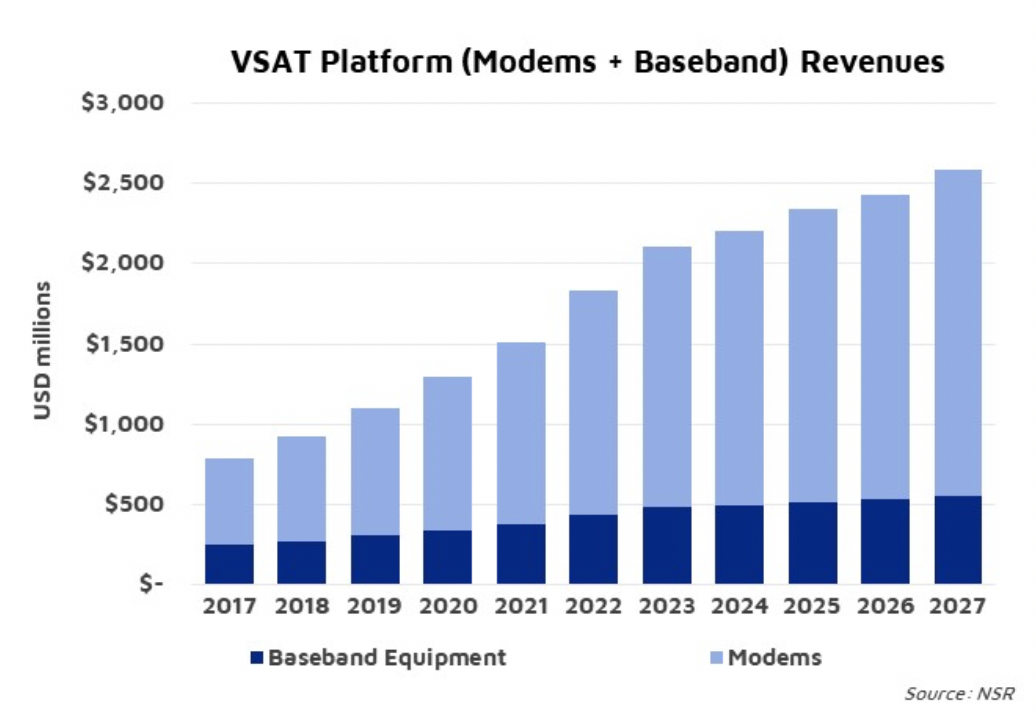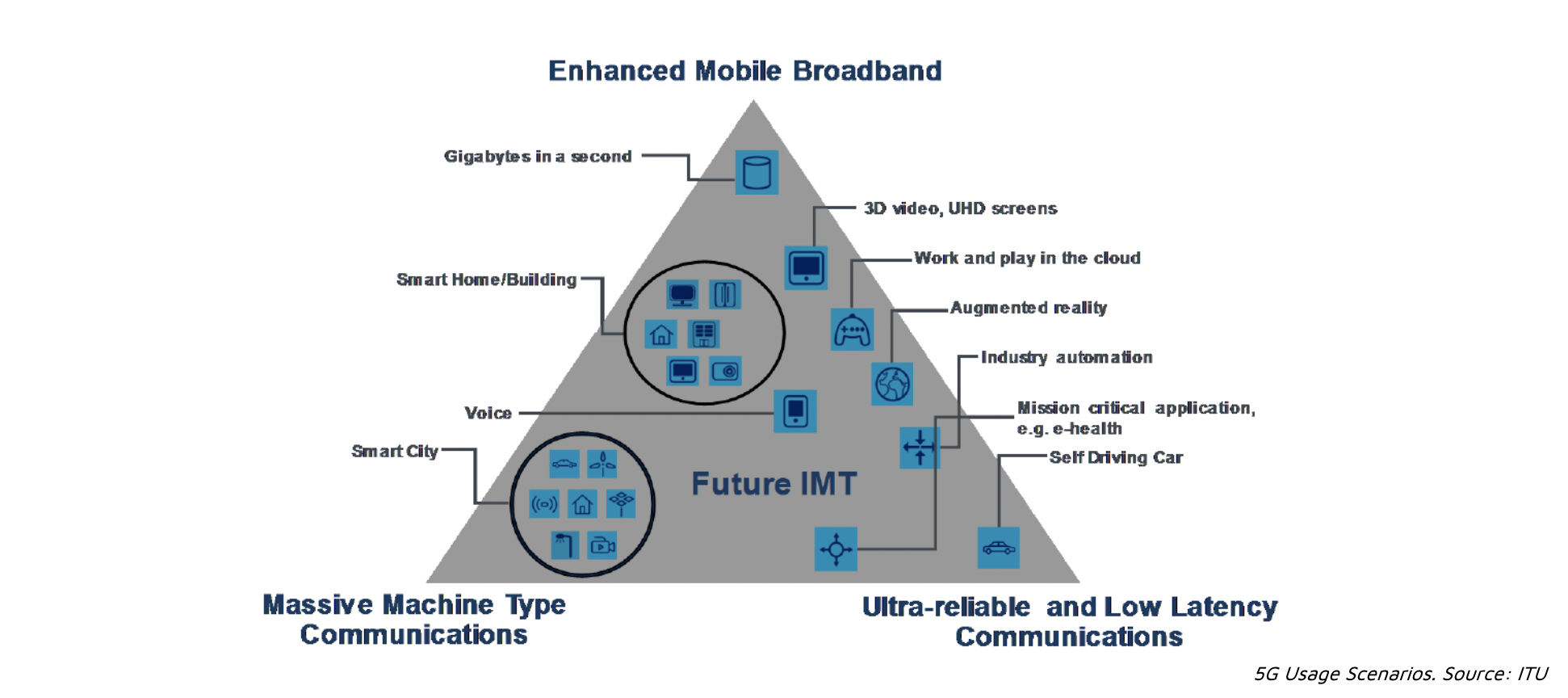Is Satcom (Ground Segment) Ready for 5G?
After years of hype, 5G is finally a (partial) reality with the first set of standards published on 3GPP Release 15. Beyond the extravagant performances announced, 5G postulates a completely new way of conceiving networks. And here is where the key opportunity for satcom resides. If the industry plays its cards well, 5G opens the opportunity for satcom to seamlessly integrate with the mainstream telecom ecosystem. But in order for this to happen, satellite will need to become a transparent means by which the satcom ground segment works in perfect tune with the orchestration of the core network. What then are the concrete steps the satellite industry needs to take today to be ready for 5G?

There is no question that one of the main pillars for the satellite industry to play a role in the 5G ecosystem is on the ground segment. Indeed, VSAT platforms are rushing to adapt their architectures to 5G requirements. The impact of 5G goes well beyond the traditional cellular backhaul over satellite segment whereby all satcom applications, including emerging use cases like mobility as well as future satellite functions such as video streaming multicast will benefit from incorporating the new 5G standard. The good news is that this effort will pay off as, according to NSR’s Commercial Satellite Ground Segment, 3rd Edition report, VSAT platforms will experience double-digit growth over the next decade. So how does this happen?
Meeting 5G Performance Requirements
When looking into the performance specs of 5G, one can be easily startled with benchmarks like 1 ms latency that could directly disqualify satellite. However, it is necessary to provide some additional context. 5G use cases are categorized into 3 elements: Enhanced Mobile Broadband, Massive Machine Type Communications, and Ultra-reliable & Low Latency Communications. Different applications will have very different requirements. For instance, some M2M connections might work well with hours of latency and a few Kbps bursts, while the autonomous car will surely require ultralow latency.
5G introduces network slicing, meaning that different clients will see different performance levels, and traffic could be routed intelligently depending on requirements. 5G moves capabilities to the edge, and many of the ultralow latency requirements will be solved at the edge without the need for backhauling to the core, making satellite a viable solution. It is worth noting that even fiber would not be able to meet the 1 ms requirement most of the time if capabilities are kept at the core of the network.

Another highly touted figure is the 10 Gbps per connection target. Looking back to the history of LTE, the vision was to deliver 1 Gbps, but that promise wasn’t realized until last year, 10 years after the standard was finalized. Even today, the minority of LTE networks meet that performance level, so do not expect networks to meet 5G promises overnight. Actually, top satellite performance is on par with terrestrial specs: Comtech modems and optimization solutions can serve 700 Mbps for a single IPv6 TCP session and an aggregated total throughput of 5 Gbps.
Network of Networks
The next major question would be how satellite networks will integrate into 5G. Past generations were conceived following a closed approach. They were “mobile” protocols, and it was very difficult for adjacent technologies to participate in the ecosystem. This created enormous challenges for satcom as making 2G/3G/4G work over satellite was not straightforward and it required huge efforts in terms of traffic manipulation (acceleration, optimization, etc.). Those challenges were unresolved until very recently, taking years for satcom to penetrate the 3G/4G backhaul market.
The good news is that 5G aims to be much more inclusive, incorporating all different technologies in what has been labelled as the “network of networks”. Virtualization is a major theme for 5G, but also for the satcom ground segment. Considering trends in the satellite industry like HTS scaling, flexible satellites, LEOs, etc., it is a natural move for the ground segment to virtualize and some vendors like Newtec are embracing this transition vigorously. So why not make satellite cloud networks compatible with 5G? Satellite networks will need to be integrable in the centralized network cloud.
Satellite interoperable orchestration with terrestrial networks is nothing new. Solutions like HughesON Managed SD-WAN, where satellite is just another element, have won wide recognition in the telecom industry. The objective here is to make satellite solutions transparent and very easy to deploy for mobile operators.
Making Satellite 5G-Compatible
With the second set of 5G standards planned by the end of 2019 (3GPP Release 16), related to that release is a specific study for 5G satellite access, which will identify satellite use cases. It is vital for the future of the industry to ensure that 5G protocols can work seamlessly over satellite networks, and now is the time to influence those standards. Unlike past experiences, the satellite community has been very active in the development of the standard and organizations like Thales Alenia Space have been very involved becoming rapporteurs of multiple satellite-related 3GPP studies. Similarly, ESOA partnered with 3GPP to become a market representative. All these efforts create favorable traction for the Satellite industry.
5G is Everywhere
Satcom is just starting to serve 4G networks (Gilat-Avanti to Enhance EE’s LTE Network) and the industry is already looking into the next generation. But 5G transcends cellular backhaul and creates opportunities across all satellite verticals. The user of 5G (be it a personal smartphone, a connected car or an IoT device) will be able to seamlessly move between networks without worrying about the access network.
Beyond the traditional cellular backhaul, private enterprise networks, aero or maritime use cases will benefit from having a unified approach to connectivity. Furthermore, new use cases like ubiquitous IoT, content multicast to edge servers or the connected car can emerge with the arrival of 5G.
Bottom Line
5G will be a truly transformative generation. It not only proposes greater performance, but it is a completely new architecture that brings all connectivity solutions together. Satcom cannot think of 5G just as a “faster network” but as the window of opportunity to become part of the mainstream telecom ecosystem. Mobile is becoming the de-facto standard for getting online so if you can’t beat them, join them.
Satcom equipment vendors have made tremendous progress in their capabilities in the last few years, and they bear the main responsibility for making satcom 5G-ready. While 5G specs seem unattainable today, one must give the right context (edge capabilities for latency-sensitive applications; network slicing) and consider the appropriate timeline (no network will be 10 Gbps-enabled just by using the 5G label) to understand that 5G will not only work adequately over satellite but that satellite is a key enabling technology to develop 5G to its full promise (ubiquity, edge capabilities, etc.). Technology demonstrators like that run by iDirect, SES, University of Surrey, i2cat and Broadpeak show that the industry is committed to embracing 5G and that technology is evolving at the right pace.
5G has multiple fronts and some might be tricky for the satellite industry (i.e. spectrum battles). But from an applications point of view, 5G is great news for the satellite industry. Not only will it revamp traditional applications with an easier integration, but it has the potential to unlock new markets like multicast streaming, IoT or the connected car.
NSR supports equipment vendors, service providers, satellite operators, end-users and financial institutions in their technology and business strategy assessment and planning. Please contact info@nsr.com for more information.
